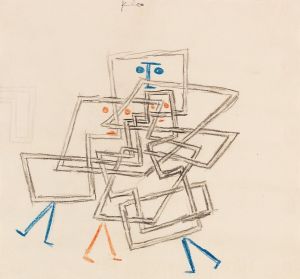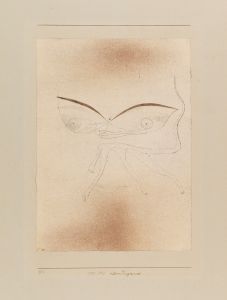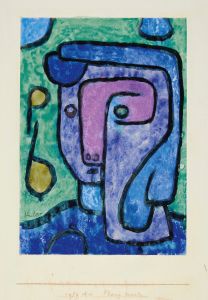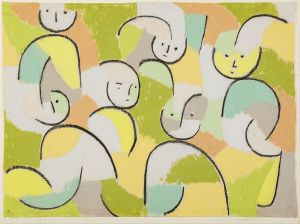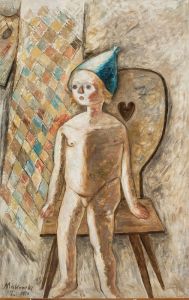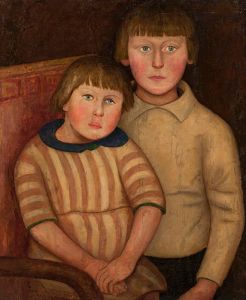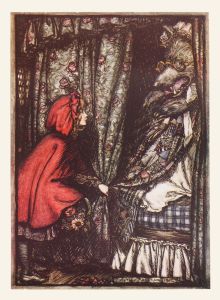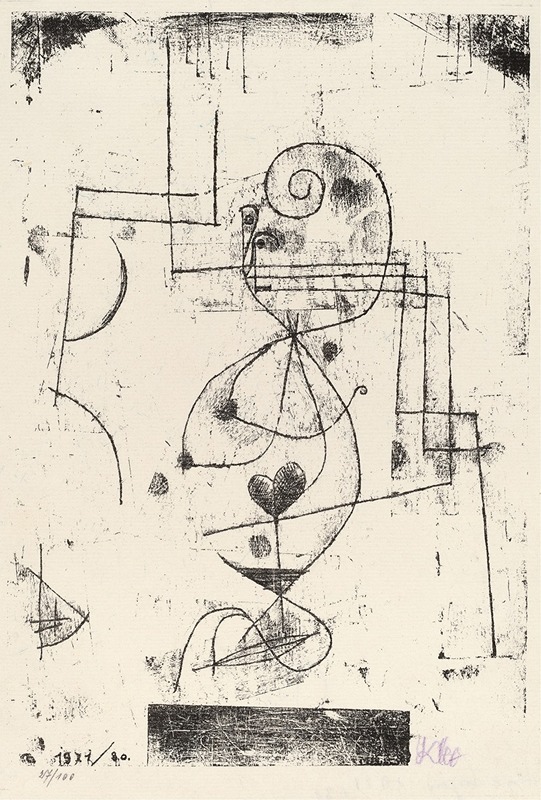
Queen of Hearts
A hand-painted replica of Paul Klee’s masterpiece Queen of Hearts, meticulously crafted by professional artists to capture the true essence of the original. Each piece is created with museum-quality canvas and rare mineral pigments, carefully painted by experienced artists with delicate brushstrokes and rich, layered colors to perfectly recreate the texture of the original artwork. Unlike machine-printed reproductions, this hand-painted version brings the painting to life, infused with the artist’s emotions and skill in every stroke. Whether for personal collection or home decoration, it instantly elevates the artistic atmosphere of any space.
Paul Klee, a Swiss-born artist, is renowned for his unique style that blends elements of expressionism, cubism, and surrealism. One of his notable works is "Queen of Hearts," a painting that exemplifies his innovative approach to art. Created in 1938, "Queen of Hearts" is a part of Klee's later works, produced during a period when he was grappling with illness and the political turmoil of the time.
"Queen of Hearts" is characterized by Klee's distinctive use of color and form. The painting features a vibrant palette, with bold reds and contrasting hues that draw the viewer's attention. Klee's use of geometric shapes and abstract forms is evident in this work, showcasing his ability to convey complex ideas through simple visual elements. The title "Queen of Hearts" suggests a connection to playing cards, a theme that Klee explored in several of his works. This association with playing cards may hint at themes of chance, fate, and the human condition, although Klee's abstract style leaves much open to interpretation.
Klee's work often reflects his interest in music, and "Queen of Hearts" is no exception. The rhythmic arrangement of shapes and colors in the painting can be likened to a musical composition, where each element plays a role in creating a harmonious whole. This musicality is a hallmark of Klee's art, as he believed that painting and music shared a common language of expression.
During the time "Queen of Hearts" was created, Klee was living in Switzerland, having fled Germany due to the rise of the Nazi regime. His art was labeled as "degenerate" by the Nazis, and he faced significant challenges in his personal and professional life. Despite these difficulties, Klee continued to produce art that was both innovative and deeply personal. "Queen of Hearts" reflects his resilience and commitment to his artistic vision, even in the face of adversity.
Klee's health was also in decline during this period, as he was suffering from scleroderma, a disease that affected his ability to work. Nevertheless, he adapted his techniques to accommodate his physical limitations, resulting in a body of work that is both poignant and powerful. "Queen of Hearts" stands as a testament to Klee's enduring creativity and his ability to find beauty and meaning in the abstract.
Today, "Queen of Hearts" is celebrated as an example of Klee's mature style, which combines whimsy with profound insight. The painting is housed in a collection that allows art enthusiasts to appreciate Klee's contribution to modern art. His work continues to inspire artists and audiences alike, demonstrating the timeless appeal of his unique vision.
In summary, "Queen of Hearts" by Paul Klee is a significant work that encapsulates the artist's innovative use of color, form, and abstraction. Created during a challenging period in Klee's life, the painting reflects his resilience and artistic genius, offering viewers a glimpse into the mind of one of the 20th century's most influential artists.





